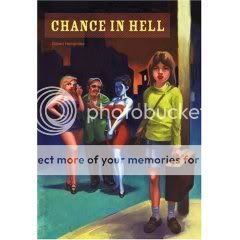* This weekend I attended the second annual Brooklyn Comics and Graphics Festival. It was the best comic con I’ve ever been to; on a pure comics level it was simply staggering, and of course that’s the level that matters. I wrote a full con report for Robot 6, so please do check it out.
* Last night HBO aired an 11-plus minute making-of/preview of Game of Thrones. I’ve embedded it twice below: The first video is the full 11:46 preview that ran on TV, while the second is a shorter version from HBO’s official YouTube account that runs about 10 minutes. Watch the longer one, provided it’s still up. What can I say? Everything looks rock-solid, and again, they seem to be emphasizing the stuff you’d want them to emphasize; Nikolaj Coster-Waldau, the actor who plays Jaime, nails the mega-plot of the whole series right to the wall, for instance. Also? The Hound. (Via Winter Is Coming.)
*Here’s a lengthy and to my mind insightful essay by Myles McNutt on Game of Thrones and the HBO brand. (Via Westeros.) Sample bit:
In earlier conversations on Twitter where I tried to find just where Game of Thrones fits within the HBO Brand, there were some logical parallels: the scale of the series is perhaps matched only by Rome (which was both a BBC co-production and an actual historical series), and the kind of fan interaction necessary for its success most closely mirrors True Blood. And yet, the show doesn’t fit easily into either of those categories, in that the show lacks the romantic and camp elements of a show like True Blood but has a greater expectation for authenticity (oddly enough) than Rome – it seems strange to suggest that viewers are scrutinizing a fantasy more closely than an historical drama, but such is the nature of a literary adaptation of a beloved series with an intelligent fan base whose expectations of this story go beyond what Sookie Stackhouse readers might have expected from the adaptation of their beloved novels or what history nuts might have anticipated from Rome (which was also sold as a fictionalized account of the historical event in question).
I’ve thought about the “accuracy” angle a lot versus True Blood, which I’m told plays fast and loose with the details, and even some major elements and characters, of Charlaine Harris’s novels while remaining broadly faithful to the overall plot, and versus The Vampire Diaries, which I’m told has almost nothing to do with the novels anymore. (Clearly the same is true of Gossip Girl.) I’m tempted to say that female-based fandom is more forgiving of deviations from orthodoxy, but then I remember that a) The Walking Dead seems to be doing just fine by most of the fans of its source material despite increasingly massive deviations from the original (and despite not being all that good, but that’s not really relevant here), and b) The Lord of the Rings, which mentally I’ve constructed as the gold standard in fandoms that demand absolute fidelity, actually made quite a few changes itself. Tom Spurgeon has argued that fans don’t want fidelity, they want flattery — flattery of what they the fans believe to be the most important aspect of the work at hand. I tend to agree with him. But in a case like Game of Thrones, where so much of the story is driven by byzantine plotting by the characters, I think fans will get a bit restless of there’s too much mucking about with it.
* Jim Woodring Frank t-shirts!
* Hyphen magazine profiles my pal Shawn Cheng of Partyka. (Via The Daily Cross Hatch.) Worth reading for the pronunciation guide to “Partyka” alone!
* Ben Morse on Juliet, the best villain in Gossip Girl history. Money quote, in more ways than one: “In the weird dynamic of this show where the spoiled brats are the heroes, it just makes twisted sense that the girl who has to do her own dishes is the villain.”
* Thank goodness someone’s finally going to put the spotlight on the Marvel Comics work of Brian Bendis. Aw, I kid. I actually think a PR initiative based on talking up the writers who help decide the direction of the Marvel Universe in an almost editorial capacity is a good idea, insofar as that’s a pretty unique set-up in terms of the history of superhero comics and worth talking about as such.
* Please subscribe to the RSS feed for Jesse Moynihan’s webcomic Forming; I don’t see how you’ll be disappointed in terms of the sheer visuals.
* I’m sure I must have seen this illustration of Lady Liberty and Lady Justice making out somewhere before, but only in seeing it now do I realize how cool it would be if there were a giant Statue of Justice on the West Coast somewhere, with the two of them bookending America like the Argonath.




























